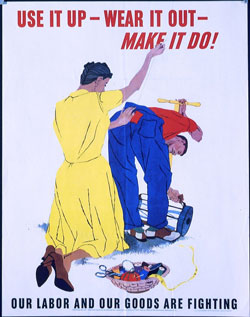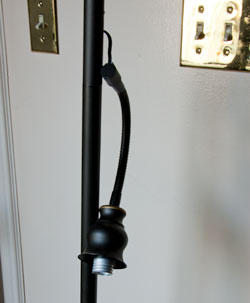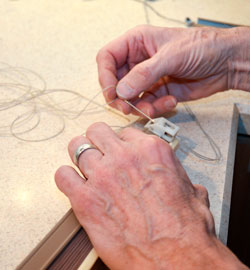Repairing stuff
 From nh.gov
From nh.gov A clever poster from WWII showing two repairs / maintenance happening simultaneously
Over the years there have been a multitude of things we've been able to reuse because John had the skills to repair them. (Although saving money isn't the focus of our green "good life" project, this practice has indeed saved us a fortune over the years.) These are the skills that have been lost to most of the current generation.
It's understandable. Life is busy, and after all, didn't we go to college, acquire thinking skills, and develop a career so we wouldn't have to do these "menial" tasks?
But we underestimate the importance of these skills, the thinking abilities that go into them, and even the satisfaction of knowing how to repair things.
Of course, some modern things have become so technically complicated that there is no repair possible. Who can repair a cell phone, for example? And I suspect they're sometimes intentionally made difficult to repair or made so shoddily in the first place that they're not worth repairing.
 ©Janet Allen
©Janet Allen Our 4-yr-old grandson sitting with the box he make with a real miter-box and miter-saw. For him, it's "skilling" rather than "reskilling," but at any rate he'll be able to make and repair things in the future rather than chucking them.
But there are many other things that can be repaired. We see these things put out to the curb every day: chairs with one broken back spindle, for example. These things could be repaired or given to someone who could repair them.
One of our biggest regrets is that we decided to get a new refrigerator solely because our otherwise-working refrigerator (only about five years old) had bad gaskets. Obviously, it could be used that way since it was constantly running due to the air leaking in and out. The cost of repairing it, though, was an unbelievable $500+! It didn't make financial sense to spend almost the cost of a new refrigerator on a five-year-old model. BUT we could have tried to replace the gasket ourselves, since the cost of repair was mostly labor, not materials. I'm sure our old refrigerator make a one-way trip to the dump, perhaps stopping at the scrap metal dealer, but it could have kept working for a number of years but for that one fixable problem. It just hadn't occurred to us that we could do this until a neighbor mentioned that they had fixed theirs. At the very least, we could have advertised it on FreeCycle or craigslist and given it to someone who wanted to fix it. They would have ended up with a good quality refrigerator for just their time and modest cost of the new gasket.
 ©Janet Allen
©Janet Allen The metal attaching the light to the pole broke—can it be fixed?
There used to be a shop called Mr. Fix-it in Syracuse, which focused on the repair of lamps and similar items. We had used their services on occasion, but it has long since disappeared, much to our dismay.
When our lamp recently broke, we checked around to see if anyone could fix it. It turns out that a local lighting store had someone come once a week to do this kind of work. Instead of putting our two broken lamps in the trash (our first inclination), we had both of them fixed for $60. Not only did this save the resources that would be needed to manufacture new lamps and save landfill space, but it also provides a satisfying job for someone.
 ©Janet Allen
©Janet Allen Repairing our family room shade
We were dismayed to see that one of the cords broke on our family room shade so we couldn't pull it up. I guess it wasn't surprising since it's over 25 years old, but since it's one of a set of five shades in the room (three being on the three parts of the bay window), it was a problem.
I suppose we could have replaced just that one shade, but since it is an unusual shade of brown it never would have matched the others. Not only would it be expensive to replace all five, but it would be extremely wasteful, especially since the other four were in perfect condition. What to do?
We were amazed to find that we could purchase a little $10 kit with extra cord and other little items (including a needle) that we could use to fix it ourselves! And it worked! (See sidebar for the company we used.)
